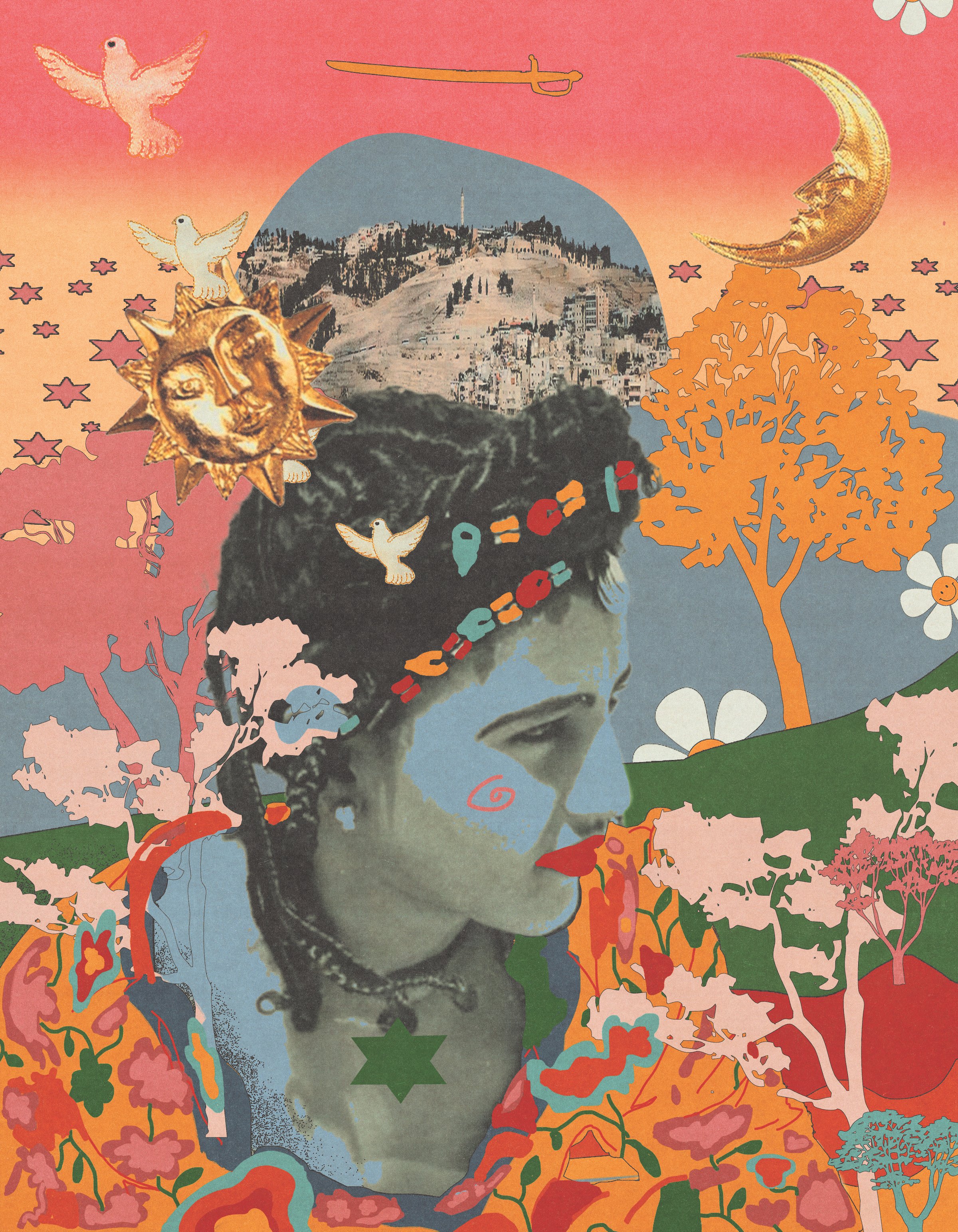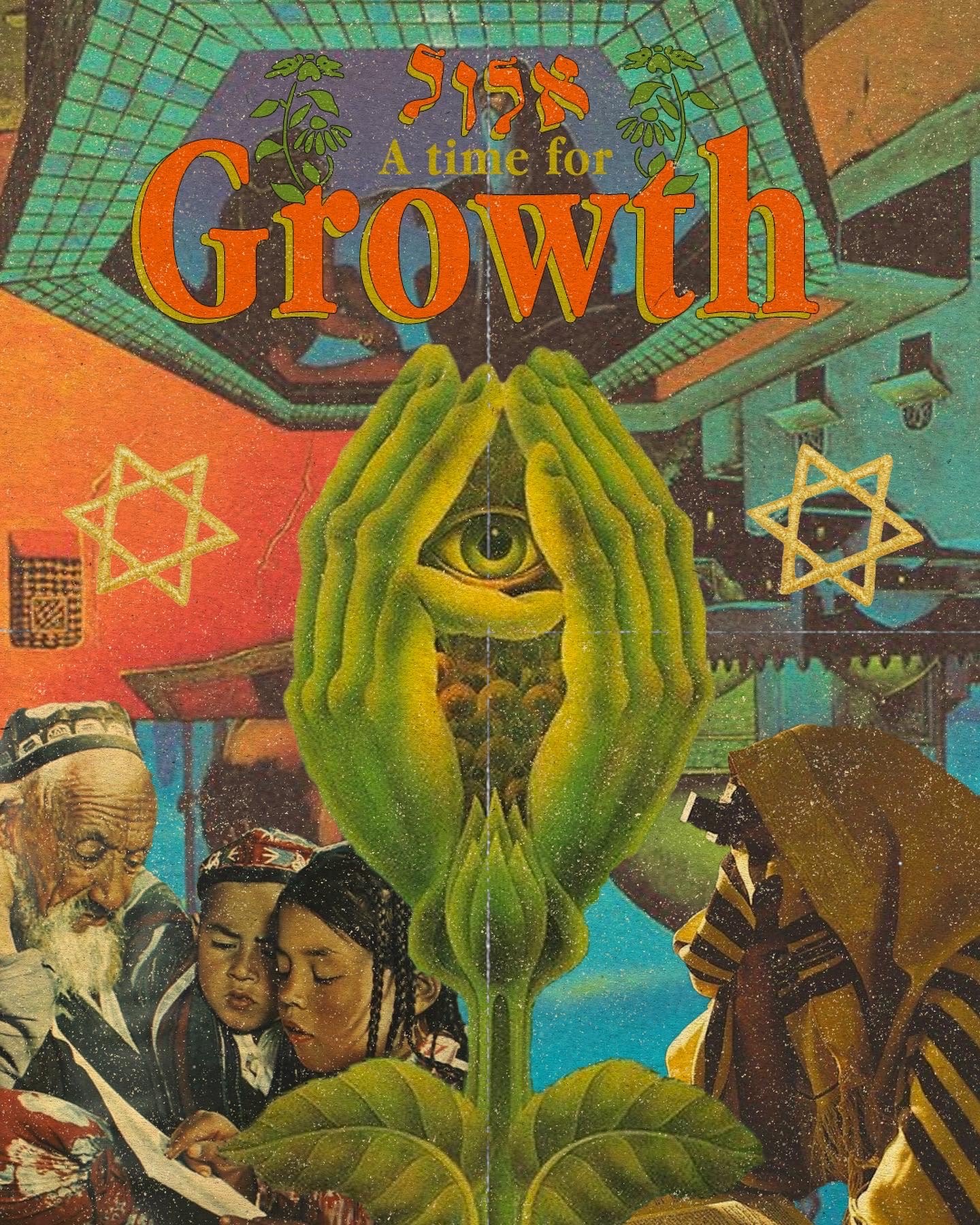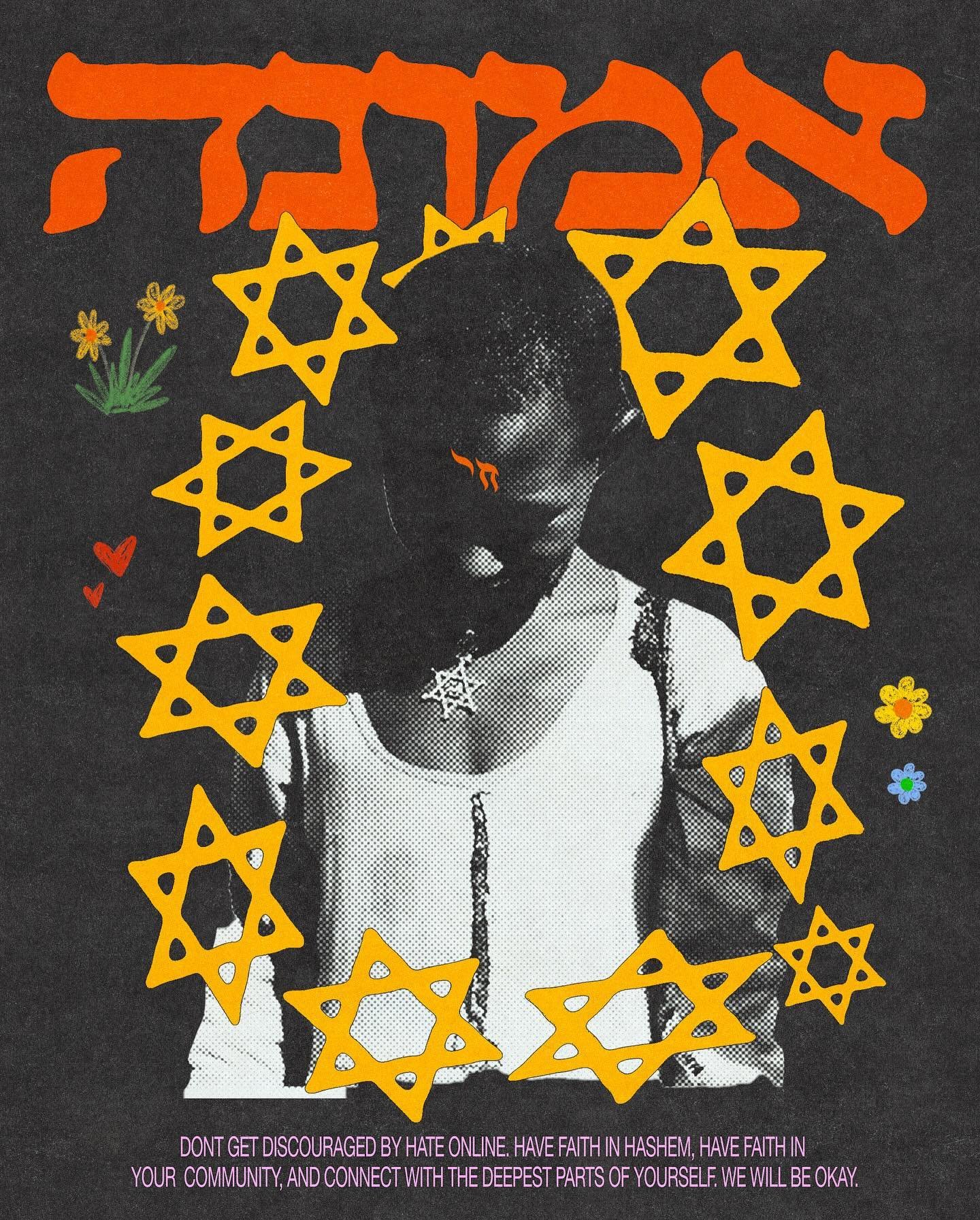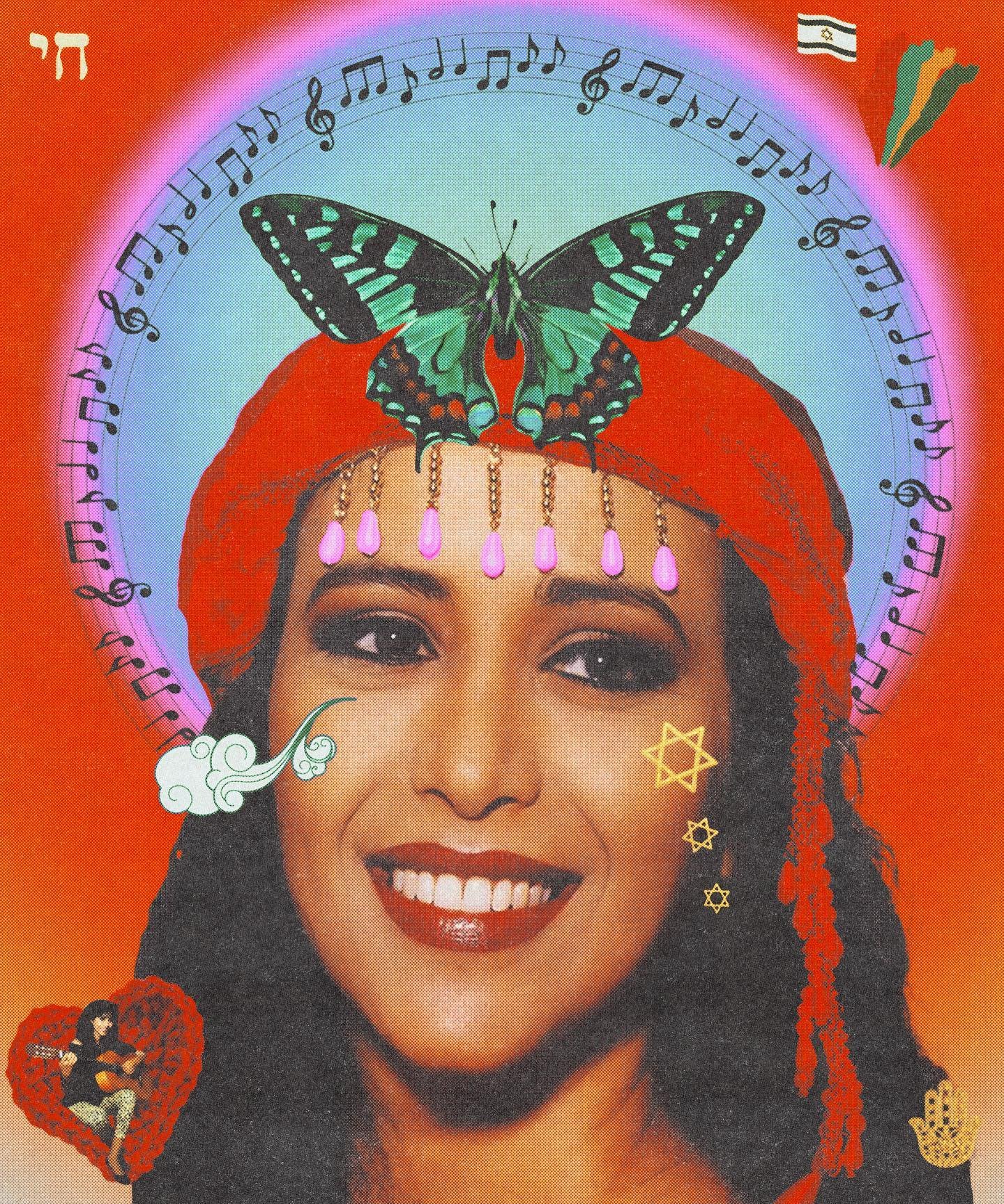A Blemish on the Arts: A Letter from a Jewish Artist
Hello, my name is Alex Woz. Some might know me as a Jewish artist who makes designs to help Jews feel less alone in a world that is growing increasingly hostile toward our community. However, those who have followed my work, or who have known me for long enough, know that out of my 10 years of design and art work, only 3 of those years have been dedicated to creating works with Jewish themes.
Alex Woz
To be honest, the work I wanted to create was never imbued with Jewish themes. It was just plain artwork, collage, paintings, and designs that I seemed to like. I envisioned a positive future of designing hip hop and rock album covers, while attempting to land my physical pieces of artwork into galleries in California.
In 2020, in the midst of the Pandemic, I made a piece that had a collection of figures being eclipsed by a Star of David. I included the symbol in the piece to represent my own heritage and how it informs my work. A year later, when prepping originals to send to galleries, I entered the piece into a fairly large design competition in Los Angeles- the winner would have a chance to display their piece at a relatively well known gallery in the area.
I submitted my piece, and leaned back to wait for the results. A week or so later, I received an email, crowned with the everlonging intro, “We regret to inform you…”. I was crushed- but as a student of the craft I am always looking to improve and learn from my experiences. I continued to read.
“We cannot display any form of political art in the space.”
I paused, and reread the line over again. “Political?”, I thought. “What’s political about a Star of David?”
I rushed to email them back, asking for a clarification in what I thought was a mistake. I never got a response.
If a gallery decides to reject any artist, it is by all means their every right to do so. Conversely, if a gallery desires to omit political artworks from their display, they have every right to do so. The only problem was, a Star of David is not political. Or is it?
I marinated on that question for months. As time progressed, I stood still while the world rapidly changed around me- the Chicago Dyke March banned the Star of David on all flags, citing that it symbolized “Israeli Oppression”. Years later, when working on a largely visible project combatting antisemitism, I was told to omit the Hebrew language from the campaign as not to offend anyone.
For years, I’ve been a rabid proponent of the intersections between art and activism, often fiercely clutching my beliefs that great art is imbued with its purpose, and has a right to be culturally offensive, if part of the intent. The show went on.
I viewed the gallery’s displays that had been chosen. Works which dealt with themes like abortion, race, and gender were displayed and celebrated in the space.
Then, why did a Star of David cross the line? When I told my dad about the ruling, he sighed and said, “maybe they don’t want their windows smashed in.”
I am not upset I didn’t make the cut- it’s been years and a great learning experience. I am beyond proud of the incredible artists who had their works displayed. I also imagine that the author of the email needed some valid explanation as to why they couldn’t display the work, even if it wasn’t quite the truth of why it wasn’t chosen. My issue is that slapping the “too political” label on a piece with only a Star of David should not be the “easy explanation”. I would have accepted anything else with grace.
This haphazard alignment of Judaism with the politics of evil has dramatically worsened since Israel’s respective wars with Hamas in both 2021 and in 2023, in which the most menial references to Judaism have become closely aligned with politics, to the point where they must be industrially sanitized as not to anger the public. You can see the hateful comments about a war thousands of miles away decorating the comment section of a teen’s latke recipe video on Tiktok.
We walk on eggshells to even express the most innocent elements of our culture and heritage, careful not to arouse an internet mob, or oftentimes, physical violence and abuse. I have witnessed such abuse with my own eyes more times than I can count, and when we speak out against it, we are invalidated.
In the 19th century, the commonly-held belief about Jewish people is that we were a people of no culture, and instead vultured off of the the cultures of our diasporic nations. The first Jewish artist to be accepted into the mainstream, Daniel Moritz Oppenheim, fought against this notion by featuring scenes of Jewish cultural life in his paintings. As a result, his works were blacklisted in several art circles, shunned, and viewed as a propagandist tool by the “Jewish elite.”
These times boast the same bigotry. An Israeli, and by proxy, a Jew, cannot eat without stealing, cannot plant a tree without greenwashing, cannot speak the language of his ancestors without colonizing, and cannot paint without propagandizing. The accusations of a cultureless people persist under a new context, and have snowballed into a forceful exodus from the mainstream art world, and hushed Jewish art into the quiant backroom gallery of an all-Jewish local art exhibition.
There is no future in which I can castrate my identity as not to ignite the bigotry of others. The goalposts are constantly moving ahead of me as I sprint for the next. I do not want to deal with an art world that celebrates some forms of diversity, but ashamedly conceals others as though they are a blemish on an otherwise beautiful face.
I understand that this is not going to change- it’s only going to get worse. To Jewish artists and creators- you will never appease the mob, only placate them. The marginalization has become a cemented law amongst the circles I had held sacred for so many years- a once invisible shunning has evolved into a monstrously visible blacklisting. Even the same goes for our Israeli brethren, who often hesitate before announcing where they are from, or often choose to omit their nationality from their artists statements as not to be immediately rejected or protested, regardless of their personal beliefs.
The major art institutions, as in correspondence with their own history, suffer from institutionalized antisemitism among their ranks. They fail to grasp the impeccable memory of the Jewish people- they often fail to remember how many of the largest art academies and institutions in the West didn’t permit Jews to freely pursue art as a trade until the late 1800's. Thus, the concept of a Jewish artist in the western mainstream is a relatively new concept, albeit shadowed by a grim past of exclusion and marginalization. Instead of nurturing our newest echelons to the art world, they instead are given a backwards churning treadmill and told to publicly castrate themselves or risk deportation from the mainstream.
By writing this, I do not wish to victimize myself- I am not a victim. I am an observer- and I am currently observing the art world, my cherished and beloved, a once beautiful vine that invited all, and once welcomed controversy as an inherent quality of art, wilt and wither into a deflated thorn. Hopes have faded into frustration, and Jewish artists are often gaslit into the reasons why they are rejected. I hope I can and will be proven wrong. I work in high hopes that my work will be made irrelevant in the years to come- but I grow pessimistic to that dream, as a seemingly never-ending wave of antisemitism cascades over my generation, advancing closer and closer to all of our personal lives each day.
It is merely impossible to exist as a non-partisan Jew in today’s climate of art and academia. You are coerced into providing an opinion, and when that opinion G-d forbid doesn’t align with what the public wishes to hear from you (in order to confirm their own biases about your people), you are tossed aside like a broken doll, defective of any real use.
If it is impossible for me to be viewed as non-partisan, I decided to be partisan, and to be an advocate for my people- even if I lengthen a gallery’s blacklist, invite a few people to smash in my windows, or decorate my artwork with some mean comments. I’ve ruled out the public disfiguration of my identity as an option- and that has lended me the freedom to be unapologetic in the topics I am allowed to express, at the great cost of mainstream representation.
The spirit of art and the spirit of academia are intertwined, and should inherently exalt the great traditions of honoring dissenting opinions, freedom of expression, nuance, and providing equal opportunity for all subjects. To reject works upon the basis that a mob will form outside, or will deface the social media profiles of it’s curators sets a dangerous precedent, not only to Jews, but to freedom of artistic liberties by all peoples.
So, then, who am I creating art for? Who are you creating for? For the gallery viewers? For the curators? Or for the window smashers? If I am a blemish, feel free to pop me. But you cannot ignore me –or at the very least, have the decency to smash the windows in before you do.
Alex Woz in his Southern California Home





